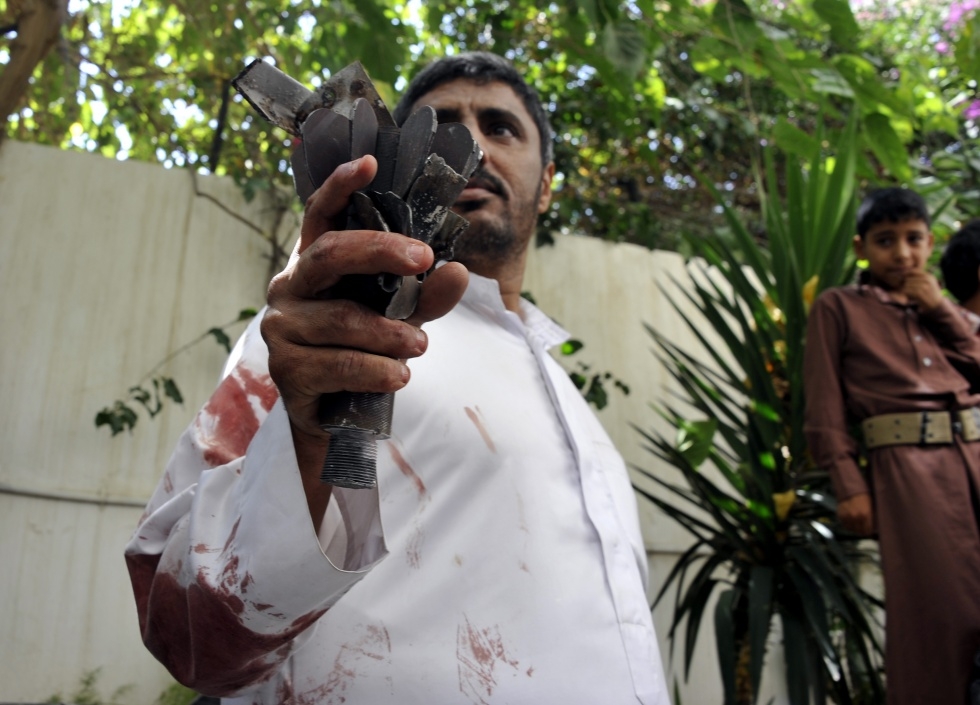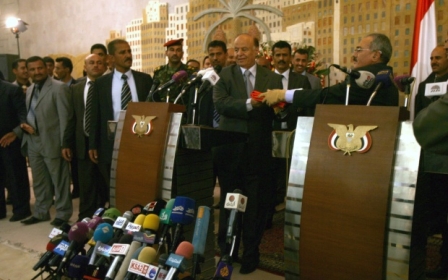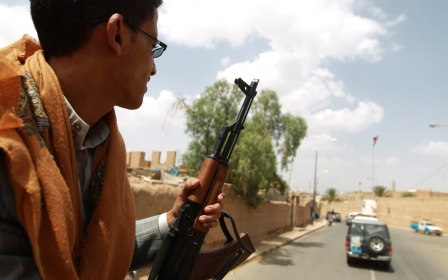Clashes in Sanaa has Yemenis fearing sectarian strife

Yemenis awoke to the sound of gunfire and explosions on Friday morning as a Shiite rebel group from Yemen’s north, overran the capital and battled army units with heavy weapons for control of a Sanaa suburb.
At least 80 people were killed, residents and doctors told Middle East Eye, when Houthi militants and soldiers from the Islamist-allied First Armoured Division fired rockets and mortars at each other in the north of the capital near Yemen’s state television channel offices.
Phone networks and internet were shut off and international flights to Yemen were suspended as the fighting encroached on the country's main airport, authorities said.
“I live a few miles from the area, I keep hearing the shelling and gunshots, it’s been happening all morning,” Abu Khalef, an independent journalist told Middle East Eye over the phone from Sanaa. “There are militias on the streets and snipers in buildings. Families are leaving with bags on their backs, fleeing their houses.”
Friday’s violence is the worst the capital has seen since the a popular uprising in 2011 toppled former President Ali Abdullah Saleh after 33 years in power, and marks a significant escalation in the month-long campaign by the Houthis who are demanding a new government and more power for their community.
Government officials told AFP on Friday afternoon that a ceasefire had been signed after mediation with the Houthis but Ali Emad, a spokesman for the group denied that an agreement had been reached.
Sectarian fears
Yemen, a patchwork nation of tribes and religious sects, has largely avoided sectarian conflict of the kind found in other parts of the Middle East. The 2011 uprising saw Yemenis – Sunni and Shiite, secularist and Islamist – put aside differences in the name of battling the shared injustices of poverty and corruption.
But that unity is unravelling.
The Houthis who are predominantly Zaydi, a Shiite sect adhered to around 35 percent of Yemenis, are saying that they are protesting against rising fuel prices, and for an end to "corruption". But many Yemenis fear that the fighting, which is mainly between the Houthis and the Sunni-dominated Islah party, may devolve into a sectarian struggle.
“For the first time since the 1960s we have sectarianism returning to the forefront of mainstream politics,” said Yemeni analyst, Abdulghani al-Irayani. “It is now a key factor in forming political alliances.”
One Sanaa resident who did not want to be named told Middle East Eye on Friday that he had a sectarian affiliation but that did he did not want to share it. His fear, he said, was one shared by many Yemenis: that normal people, whether Sunni or Zaydi, will be caught in the middle of extremists harden their sectarian rhetoric to mobilise supporters and get closer to power.
“The guy living next door to me is Zaydi, he supports the Houthis,” the man said. “In the house on the other side the man is Sunni, he is with the Islah. Right now neither has an interest in fighting the other but if their leaders tell them they are threatened as a group they’ll turn on each other. People like me will be caught in the middle and I don’t want that to happen.”
New MEE newsletter: Jerusalem Dispatch
Sign up to get the latest insights and analysis on Israel-Palestine, alongside Turkey Unpacked and other MEE newsletters
Middle East Eye delivers independent and unrivalled coverage and analysis of the Middle East, North Africa and beyond. To learn more about republishing this content and the associated fees, please fill out this form. More about MEE can be found here.




